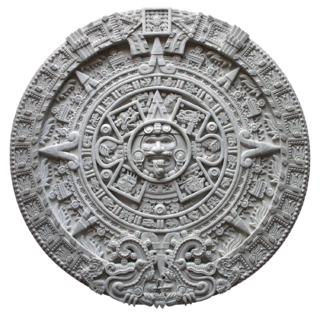 W
WMesoamerican chronology divides the history of prehispanic Mesoamerica into several periods: the Paleo-Indian, the Archaic, the Preclassic or Formative (2500 BCE – 250 CE), the Classic (250–900 CE), and the Postclassic (900–1521 CE), Colonial (1521–1821), and Postcolonial (1821–present).
 W
WThe Acaxee Rebellion was an insurrection against Spanish rule in Mexico by Acaxee Indians in 1601.
 W
WThe Aztec Empire, or the Triple Alliance, was an alliance of three Nahua altepetl city-states: Mexico-Tenochtitlan, Texcoco, and Tlacopan. These three city-states ruled the area in and around the Valley of Mexico from 1428 until the combined forces of the Spanish conquistadores and their native allies under Hernán Cortés defeated them in 1521.
 W
WIn archaeology, the classic Maya collapse is the decline of the Classic Maya civilization and the abandonment of Maya cities in the southern Maya lowlands of Mesoamerica between the 8th and 9th centuries, at the end of the Classic Maya Period. The Preclassic Maya experienced a similar collapse in the 2nd century.
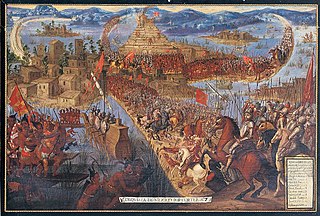 W
WThe Spanish conquest of the Aztec Empire, also known as the Conquest of Mexico (1519–21), was one of the primary events in the Spanish colonization of the Americas. There are multiple 16th-century narratives of the events by Spanish conquerors, their indigenous allies, and the defeated Aztecs. It was not solely a contest between a small contingent of Spaniards defeating the Aztec Empire but rather the creation of a coalition of Spanish invaders with tributaries to the Aztecs, and most especially the Aztecs' indigenous enemies and rivals. They combined forces to defeat the Mexica of Tenochtitlan over a two-year period. For the Spanish, the expedition to Mexico was part of a project of Spanish colonization of the New World after twenty-five years of permanent Spanish settlement and further exploration in the Caribbean.
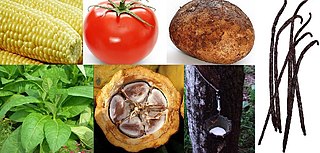 W
WThe early impact of Mesoamerican goods on Iberian society had a unique effect on European societies, particularly in Spain and Portugal. The introduction of American "miracle foods" was instrumental in pulling the Iberian population out of the famine and hunger that was common in the 16th century. Maize (corn), potatoes, turkey, squash, beans, and tomatoes were all incorporated into existing Spanish and Portuguese cuisine styles. Equally important was the impact of coffee and sugar cane growing in the New World. Along with the impact from food, the introduction of new goods also altered how Iberian society worked. One can categorize the impacts of these New World goods and foods based on their influence over the state, the economy, religious institutions, and the culture of the time. The power and influence of the state grew as external entities became dependent on Spain for these New Goods in the early 16th century. The economies of both Portugal and Spain saw an enormous increase in power as a result of trading these American goods.
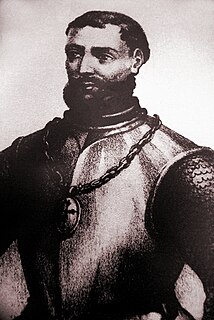 W
WFrancisco Hernández de Córdoba was a Spanish conquistador, known to history mainly for the ill-fated expedition he led in 1517, in the course of which the first European accounts of the Yucatán Peninsula were compiled.
 W
WThe history of Maya civilization is divided into three principal periods: the Preclassic, Classic and Postclassic periods; these were preceded by the Archaic Period, which saw the first settled villages and early developments in agriculture. Modern scholars regard these periods as arbitrary divisions of chronology of the Maya civilization, rather than indicative of cultural evolution or decadence. Definitions of the start and end dates of period spans can vary by as much as a century, depending on the author. The Preclassic lasted from approximately 2000 BC to approximately 250 AD; this was followed by the Classic, from 250 AD to roughly 950 AD, then by the Postclassic, from 950 AD to the middle of the 16th century. Each period is further subdivided:
 W
WMost of the ancient civilizations of Mesoamerica such as the Olmec, Maya, Mixtec, Zapotec and Aztec cultures practiced some kind of taking of human trophies during warfare. Captives taken during war would often be taken to their captors' city-states where they would be ritually tortured and sacrificed. These practices are documented by a rich material of iconographic and archaeological evidence from across Mesoamerica.
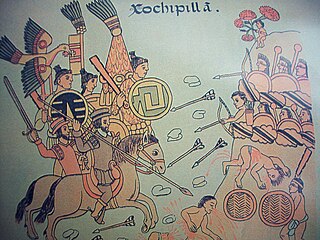 W
WThe Mixtón War was fought from 1540 until 1542 between the Caxcanes and other semi-nomadic Indigenous people of the area of north western Mexico against Spanish invaders, including their Aztec and Tlaxcalan allies. The war was named after Mixtón, a hill in the southern part of Zacatecas state in Mexico which served as an Indigenous stronghold.
 W
WRegional communications in ancient Mesoamerica are believed to have been extensive. There were various trade routes attested since prehistoric times. In this article, especially the routes starting in the Mexico Central Plateau, and going down to the Pacific coast will be considered. These contacts then went on as far as Central America.
 W
WThe Spanish conquest of El Salvador was the campaign undertaken by the Spanish conquistadores against the Late Postclassic Mesoamerican polities in the territory that is now incorporated into the modern Central American nation of El Salvador. El Salvador is the smallest country in Central America, and is dominated by two mountain ranges running east–west. Its climate is tropical, and the year is divided into wet and dry seasons. Before the conquest the country formed a part of the Mesoamerican cultural region, and was inhabited by a number of indigenous peoples, including the Pipil, the Lenca, the Xinca, and Maya. Native weaponry consisted of spears, bows and arrows, and wooden swords with inset stone blades; they wore padded cotton armour.
 W
WThe Spanish conquest of Guatemala was a protracted conflict during the Spanish colonization of the Americas, in which Spanish colonisers gradually incorporated the territory that became the modern country of Guatemala into the colonial Viceroyalty of New Spain. Before the conquest, this territory contained a number of competing Mesoamerican kingdoms, the majority of which were Maya. Many conquistadors viewed the Maya as "infidels" who needed to be forcefully converted and pacified, disregarding the achievements of their civilization. The first contact between the Maya and European explorers came in the early 16th century when a Spanish ship sailing from Panama to Santo Domingo was wrecked on the east coast of the Yucatán Peninsula in 1511. Several Spanish expeditions followed in 1517 and 1519, making landfall on various parts of the Yucatán coast. The Spanish conquest of the Maya was a prolonged affair; the Maya kingdoms resisted integration into the Spanish Empire with such tenacity that their defeat took almost two centuries.
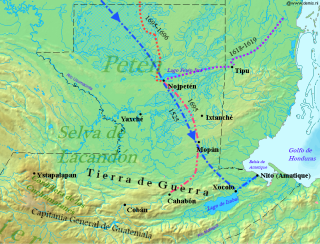 W
WThe Spanish conquest of Petén was the last stage of the conquest of Guatemala, a prolonged conflict during the Spanish colonisation of the Americas. A wide lowland plain covered with dense rainforest, Petén contains a central drainage basin with a series of lakes and areas of savannah. It is crossed by several ranges of low karstic hills and rises to the south as it nears the Guatemalan Highlands. The conquest of Petén, a region now incorporated into the modern republic of Guatemala, climaxed in 1697 with the capture of Nojpetén, the island capital of the Itza kingdom, by Martín de Ursúa y Arizmendi. With the defeat of the Itza, the last independent and unconquered native kingdom in the Americas fell to European colonisers.
 W
WThe Spanish conquest of the Maya was a protracted conflict during the Spanish colonisation of the Americas, in which the Spanish conquistadores and their allies gradually incorporated the territory of the Late Postclassic Maya states and polities into the colonial Viceroyalty of New Spain. The Maya occupied a territory that is now incorporated into the modern countries of Mexico, Guatemala, Belize, Honduras and El Salvador; the conquest began in the early 16th century and is generally considered to have ended in 1697.
 W
WFrancisco Tenamaztle, also Tenamaxtlan, Tenamaxtli or Tenamaxtle, was a leader of the Caxcan indigenous peoples in Mexico during the Mixtón War of 1540–1542. He was later put on trial in Spain. With the support of Bartolomé de las Casas he defended the justice of his cause by appealing to King Carlos I.
 W
WXochitl Pronunciation(r. 877-916) was a Toltec Queen and wife of Tecpancaltzin Iztaccaltzin. Her existence beyond legend is questionable, and accounts of her life are mainly based on the writings of indigenous historian Fernando de Alva Ixtlilxochitl.